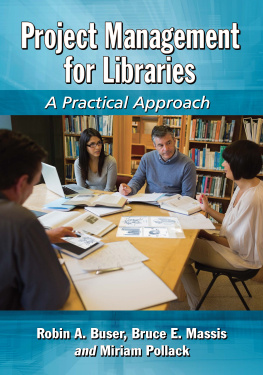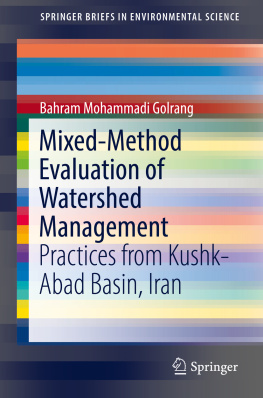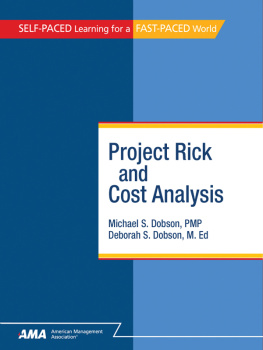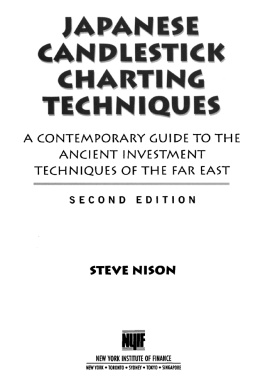First published 1990 by Westview Press, Inc.
Published 2018 by Routledge
52 Vanderbilt Avenue, New York, NY 10017
2 Park Square, Milton Park, Abingdon, Oxon OX14 4RN
Routledge is an imprint of the Taylor & Francis Group, an informa business
Copyright 1990 Taylor & Francis
All rights reserved. No part of this book may be reprinted or reproduced or utilised in any form or by any electronic, mechanical, or other means, now known or hereafter invented, including photocopying and recording, or in any information storage or retrieval system, without permission in writing from the publishers.
Notice:
Product or corporate names may be trademarks or registered trademarks, and are used only for identification and explanation without intent to infringe.
Library of Congress Cataloging-in-Publication Data
Boeri, Tito.
Beyond the rule of thumb: methods for evaluating public
investment projects / Tito Boeri
p. cm.
Bibliography: p.
Includes index.
ISBN 0-8133-7789-7
1. Economic development projectsEvaluation. 2. Economic
development projectsCost effectiveness. 3. Public investments
Evaluation. 4. Public investmentsCost effectiveness. 5. Shadow
prices. I. Title.
HD75.9.B64 1990
350.72dc20 89-32435
CIP
ISBN 13: 978-0-367-01298-4 (hbk)
The first draft of this book was written while I was a consultant at the OECD working on a review of project appraisal methodologies and practices of the Development Assistance Committee (DAC) member countries. Soon after starting the work, I realized that the state of the art was quite paradoxical. Methodologies such as cost-benefit analysis, the effects method and multicriteria analysis were being applied by a growing number of countries to the evaluation of developmental projects. Simultaneously, however, the credibility of these methodologies was being seriously challenged by theoretical advances that questioned the rationale of certain evaluation criteria of widespread application. Coming from two years as a Ph.D. student, I was strongly inclined to speculative research. Nevertheless, I sympathized with practitioners: the entire burden of appraisals was ultimately on their shoulders. They were being asked to improve the selection of projects based on tools nobody was any longer feeling very comfortable with. Meanwhile, theoreticians continued to work undisturbed on elegant models yielding all sorts of shadow pricing rules, no matter whether these were computable or not.
Today there is no sign of a forthcoming reconciliation between theoretical and applied work in the field although these areas should converge for mutual developments. Economists should think hard about ways to improve the practical relevance of their reasoning. People are mainly interested in this discipline because of its potential applicability to concrete problems; it has, after all, always been taught and treated in textbooks under the label of "applied welfare economics." Does this label still make sense? Practitioners should apply manuals' prescriptions less blindly and take more care in simplifying shadow pricing rules. The goal of appraisals is primarily to provide a framework for organizing all the basic elements that make a decision possible and eventually to suggest improvements in the projects. Yet this requires a creative use of available methodologies and a deep knowledge of their implications and shortcomings.
This book discusses the rationale for correcting market prices in the evaluation of public investments. Before some readers get disappointed, I prefer to make it clear at the outset that it is not a new manual of project appraisal. There are plenty of "cookbooks" of evaluation rules for practitioners that do not seem very useful. Shadow prices are always model-based: they depend on a certain number of assumptions, which often go far beyond the scope of positive economics. It follows that there is no scope for writing a catalogue of shadow pricing rules, except if the same model could be used to adequately describe all kinds of economies, policy stances and projects and could hold over time in rapidly changing environments. Neither would such a catalogue do justice to the wide experience accumulated over many years in the appraisal of public investments.
In writing this book I have tried to keep track of the main changes which have occurred in the last fifteen years in the way in which economists have organized their thoughts when dealing with the choice between alternative projects. Needless to say, the greatest role is still played by cost-benefit analysis, but its framework has considerably evolved since the models of its pioneers. The book also aims at covering other techniques of project appraisal that have, over time, achieved a certain popularity, at least in some countries, such as the effects method, cost efficiency techniques, multicriteria analysis and related logical frameworks.
There are three different levels in which methodological developments can be read: improvements in the mutual consistency of plans and projects, progress in the measurement of the welfare of many individuals, and refinements of taxation policies. Put another way, contributions to project appraisal techniques come from the theory of economic planning, new welfare economics and public finance. The organization of the book follows this threefold structure of the literature on the subject. by ironing out any unnecessary complications. The most mathematically difficult theoretical issues are presented in terms that give the reader an intuitive grasp.
In preparing this book I benefited from the constant encouragement of Richard Carey, Deputy Director of the OECD Development Co-operation Directorate. I owe a great intellectual debt to Jean Paul Dreze, with whom I discussed the initial idea of the book, Robert Dorfman, who introduced me to the practical difficulties of appraising large projects, and William Baumol, who gave me excellent guidelines on how to write something more readable than my earlier drafts. Several people have read parts of an earlier draft of this book and have given me helpful comments, including Henry Ergas, Giuseppe Pennisi, Lyn Squire and Piero Tedeschi. This book has been made possible by the constant scientific, technical and psychological assistance of George Papaconstantinou. I am also grateful to the students of the University of Padua where I taught cost-benefit analysis in the spring of 1989 and who provided an excellent sounding board for the final drafting of the book. Kathleen Gray read most of the previous draft and saved me from serious errors, and Tomu Katayanagi improved the clarity of diagrams. I am also grateful to my wife, Silvia, who helped me in the final editing work. Acknowledgment is finally due to Ellen Williams from Westview Press who patiently solved several technical problems. Much of what is good in the following pages is the result of their help.
Tito Boeri
1
Understanding Shadow Prices
Fifteen or twenty years ago it was much easier to consider project appraisal as a well-defined technique based on the theory of cost-benefit analysis. The publication of the celebrated Little and Mirrlees manual [Little and Mirrlees, 1974] as well as of other guidelines for project evaluation in developing countries [Mishan, 1971a; Dasgupta and Pearce, 1972; UNIDO, 1972; Squire and van der Tak, 1975] reflected a broad consensus on the validity of cost-benefit analysis. The evaluation rules prescribed by these guidelines were considered both theoretically sound and operationally significant [Little and Scott, 1976]. International organizations, such as the World Bank, and agencies operating for national governments were using cost-benefit tests as screening devices in deciding upon alternative allocations of their funds. It was a rare example where theoretical and practical advances combined into a set of rules and converged into what should be called, strictly speaking, a methodology.










